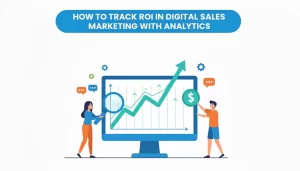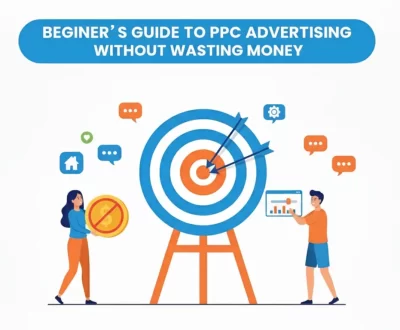How to Track ROI in Digital Marketing with Analytics
- October 24, 2025
- SEO & Local Visibility
Introduction: Why Tracking ROI is Critical for Small Businesses
For small businesses, every marketing dollar counts. Knowing how to track digital marketing ROI for small businesses helps you understand which campaigns generate revenue, which need improvement, and where to allocate resources effectively.
At DigitallyRise, we help small businesses implement analytics-driven strategies to maximize ROI, improve decision-making, and grow sustainably. This guide explains how small businesses can track ROI efficiently.

Understanding Digital Marketing ROI
Digital marketing ROI measures the return on investment for your campaigns. It’s calculated by comparing the revenue generated to the cost of marketing efforts.
Why it Matters for Small Businesses:
-
Identifies high-performing campaigns
-
Reduces wasted marketing spend
-
Helps set realistic marketing budgets
-
Supports data-driven decision-making
Knowing how to track digital marketing ROI for small businesses ensures that every marketing effort contributes to growth.
Step 1: Define Your Marketing Goals
Before tracking ROI, define clear objectives. A beginner-friendly approach to tracking digital marketing ROI for small businesses includes:
- Lead generation: How many qualified leads are generated?
- Sales/conversions: How many leads become paying customers?
- Engagement: How much audience interaction do your campaigns receive?
- Brand awareness: Are more people discovering your business online?
Clear goals make it easier to measure ROI accurately.
Step 2: Track Your Marketing Costs
To calculate ROI, you need to know how much you spend. Consider:
- Advertising costs (Google Ads, Facebook Ads, etc.)
- Content creation expenses (blogs, videos, graphics)
- Tools and software subscriptions
- Employee or freelancer hours
Accurate tracking of expenses is the foundation for understanding ROI and optimizing marketing spend.
Step 3: Measure Conversions and Revenue
The next step in how to track digital marketing ROI for small businesses is measuring results.
Conversion Tracking Tips:
- Use Google Analytics to track website traffic, form submissions, and online purchases
- Implement UTM parameters to monitor campaign-specific results
- Track offline conversions, such as phone calls or in-store visits, using CRM tools
Measuring revenue and conversions allows you to determine which campaigns deliver the best return.
Step 4: Use Analytics Tools Effectively
Analytics tools simplify how to track digital marketing ROI for small businesses.
Recommended Tools:
- Google Analytics: Monitor traffic, engagement, and conversion rates
- HubSpot Analytics: Track leads, sales, and campaign performance
- Facebook Insights & Ads Manager: Evaluate social media ad ROI
Proper use of analytics tools ensures accurate ROI measurement and insights for optimization.
Step 5: Calculate ROI and Optimize Campaigns
The formula for ROI:
ROI (%) = (Revenue – Cost) / Cost × 100
Once you calculate ROI, identify high-performing campaigns to scale and underperforming ones to optimize or pause.
Optimization Tips:
- Adjust ad targeting or messaging
- Refine email campaigns based on open and click rates
- Update content strategies based on engagement metrics
- Reallocate budget to campaigns generating the best returns
Tracking and optimization help small businesses maximize results from limited budgets.
Conclusion: Master How to Track Digital Marketing ROI for Small Businesses
Understanding how to track digital marketing ROI for small businesses is crucial for growth. By defining goals, monitoring costs, measuring conversions, using analytics tools, and optimizing campaigns, small businesses can make data-driven decisions and maximize marketing efficiency.
Contact DigitallyRise today to implement a custom ROI tracking and analytics strategy for your small business marketing campaigns.
More from our blog
See all postsRecent Posts
- Common Digital Marketing Mistakes Small Businesses Make October 24, 2025
- How to Grow Your Small Business Online Successfully October 24, 2025
- Leveraging AI in Digital Marketing for Small Businesses October 24, 2025









Pingback: Digital Marketing for Small Businesses : The Ultimate Guide